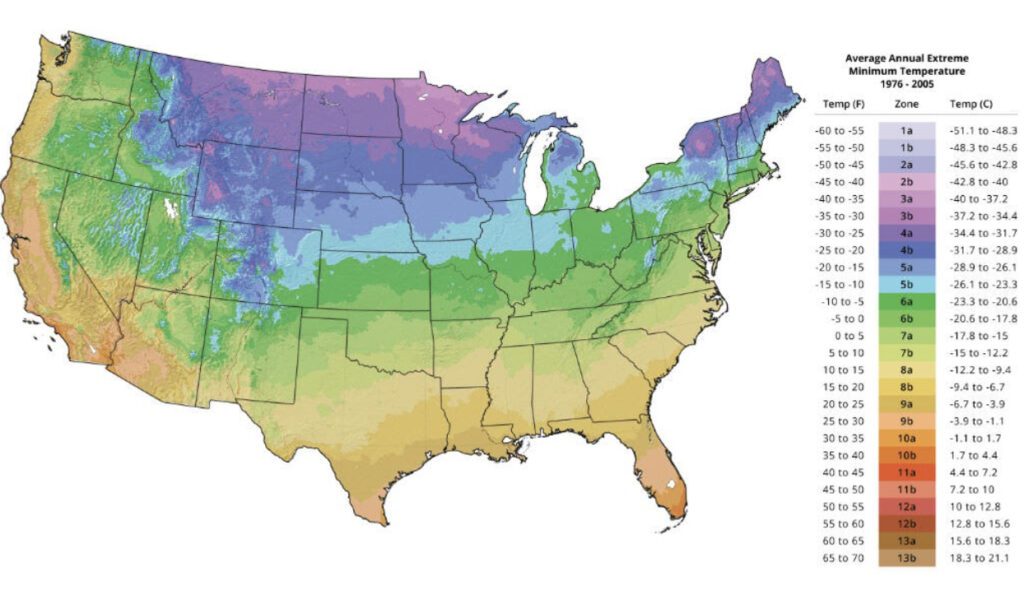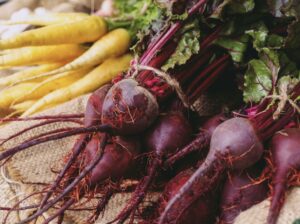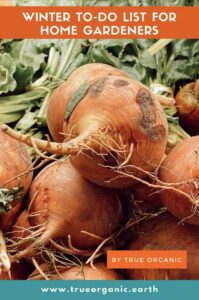December 12, 2021
Winter To-Do List For Home Gardeners
Winter To-Do List For Home Gardeners
As days go from crisp to downright chilly, the natural world shifts into a restorative phase, soil hardens under snow and freezing temperatures, and it’s time for urban farmers and gardeners to shift their focus.

Cold months mean “rest and restore” season for your plant habitat. That doesn’t mean there isn’t plenty to do during Winter to keep your garden healthy, organized, and prepped for growing season — and to keep your green-thumb inclinations satisfied.
What’s Your Zone?
Understanding your region’s average climate is an essential part of taking good care of your garden or farm year-round. The tasks and projects that are most appropriate for your land will depend on your climate and the Winter weather your region experiences.
The specific USDA Plant Hardiness Zones Map pin-points average winter temperature lows — from Zone 1 to 13. This is the best tool to discover exactly which plants are most viable in your location.
Once you know your Zone, even a simple internet search for “winter crops for Zone 4-6” will yield a wealth of knowledge to support your gardening dreams!
Clean and Clear
Winter garden maintenance can feel like a whole lot of cleaning. While it can feel tedious at times, remember that the better you maintain your garden space when growing season closes, the more you’ll enjoy returning to that tidy, ready-to-grow garden next Spring.
- Clean out smaller pots and containers that contained annuals. Store them inside a garage, basement or shed where they’re protected from harsh weather. Exposing plastic and some ceramic pots to freeze-thaw cycles can cause them to crack and erode.
- If you grow in large containers full of healthy soil (like barrels or troughs), you can keep the soil inside, covering it with mulch and/or a tarp to nourish soil for next Spring.
- If you don’t have an indoor storage place for your pots, stack them upside down and cover with a protective tarp.
- Pull up any remaining annuals and toss them in your home or municipal compost.
- If you don’t have a compost option, cut up spent (healthy) plants and place them on top of your raised bed or in-ground soil. They’ll start to decompose over winter and enrich the soil for the spring.
- Pro tip for cold climates: get as much weeding and bed-clearing as possible done in the Fall and early Winter, before temperatures really drop, to spare your fingers from getting frosty.
Support The Soil
Leaving bare soil exposed over Winter invites a whole host of undesirable outcomes, including soil that’s tapped of nutrients come Spring.
Enriching soil during less bountiful months not only helps support a bountiful Spring garden, it also prevents erosion during those Winter freeze-thaw cycles and precipitation. Supporting your soil throughout Winter can be as simple as covering up your growing area or as extensive as planting a cover crop.
 Plant Cover Crops
Plant Cover Crops
Cover crops suppress weeds, restore soil nutrients that your Summer and Spring plants used, and prevent erosion and disease.
Some of the most popular and easy-to-grow cover crops are clover, fava beans, and other legumes, as well as grasses like oats, barley, and rye. The time to plant cover crops is before the deep freeze arrives.
Cover Soil
Not ready to plant a cover crop? You can protect your soil in other ways.
If you grow in raised beds, cover your soil with a layer of mulch, or even with nicely chopped pieces of those spent annuals you pulled up. (Don’t do this with any diseased or pest-ridden spent plants.)
You can even cover your soil (and the mulch on top of it) with a tarp to protect it from harsh weather.
Embrace The Winter Harvest
Depending on your Climate Zone, you may still be harvesting into early Winter! Take full advantage of your cold-season harvest and allow plants to fully run their course.
Or perhaps you’re gardening in a Zone that supports growing cool-weather crops like citrus, kale and other leafy greens, and root veggies — especially carrots and beets, which get sweeter in cold temperatures!
 Reflect and Plan
Reflect and Plan
Winter is the time for cozying up by the fire with a mug of tea, your gardening dreams, and all your new seed catalogs. Take some time this season to relax, reflect, and plan — and appreciate.
Here are some tips on how to embrace Winter garden planning:
- Look back at what worked and what didn’t during the Spring and Summer months. Record this in your garden journal.
- Dream about what you’d like to plant, harvest, and eat next year. Get imaginative!
- Assess your land, beds, and planting areas. Will you need more space next year? Perhaps you want to scale down?
- Order seeds early! Homesteading and home gardening is experiencing a surge in popularity (yay!), so serious urban farmers will want to get a head start on scooping up the seeds they want.
- Consider adding diversity to your garden with native plants and pollinators.
- Organize your saved seeds, if you are a seed saver, and chat with friends and community members about swapping seeds.
- Artistically inclined farmers may use a journal to capture drawings of the wildlife and weather that passes through your urban habitat throughout winter.
Not only is garden journaling and planning a great way to keep your mind and hands at ease, it’s also in-line with what nature intends for us at this time of year. Winter is, for many in the plant and animal kingdoms, a time for rest, restoration, even hibernation and dormancy. Why not join in?
Show us your True Organic Plants
#GrowWithTrue
www.trueorganic.earth

 Plant Cover Crops
Plant Cover Crops Reflect and Plan
Reflect and Plan
